
An ambitious plan to equip all primary schools in the country with a free vegetable-growing garden, to ensure every child can have hands-on education in “food literacy”, has been introduced by social enterprise Grow It Yourself (GIY).
The first phase of Grow at School aims to cover 1,600 schools — about half of the Republic’s 3,240 total — by 2024, at a cost of €3.2 million. GIY is budgeting €2,000 per school to provide the kit of four raised beds, soil to fill them, seeds and other materials, along with teacher training and ongoing support to help the growing patches to flourish.
“What we don’t want to do is carpet bomb the country with gardens that don’t get used,” says GIY founder Michael Kelly. “It has to be effective and it has to work and that means it is incumbent on us to provide top-notch support to the teachers to make a success of it.” This project ticks the boxes, so to speak, not only for climate change and sustainability but for physical and mental health, cross-curricular education and accessibility for children of all abilities. But for Kelly it’s primarily a “once-in-a-lifetime” opportunity to give all children a greater understanding of where food comes from. There is evidence that this leads to changes in behaviour, which our planet so badly needs.
“The top-two behaviour changes we find that people adapt when they start to grow their own food: they eat more plants and they waste less food,” says Kelly. “Those two things are the two biggest climate change mitigation measures.” Children’s “pester power” can be harnessed for positive effect too, as they bring home interest in growing and greater awareness of food waste, having seen how much effort goes into its production.
Council to run the rule over Portobello house revival as Hugh Wallace deviates from the plan
Irish WWE star Lyra Valkyria: ‘At its core, we’re storytellers. Everything comes down to good versus evil’
The 2 Johnnies Christmas Party at 3Arena: It’s easy to sneer at the triteness and crudeness, but are 13,000 happy fans wrong?
The Guildford Four’s Paddy Armstrong: ‘People thought I was going to be bitter and twisted when I came out of prison’
Making food-growing “systemic” in primary schools — “that is the bit that really excites me,” says Kelly. “If we do get to the point where every school in the country has a garden and food growing becomes the norm, that is the silver bullet from my perspective. You would have literally every child coming through our education system understanding a bit more about where their food comes from.” It is that generation, he points out, which “is going to have to deal with the impact of all the crap that we have created for them”.
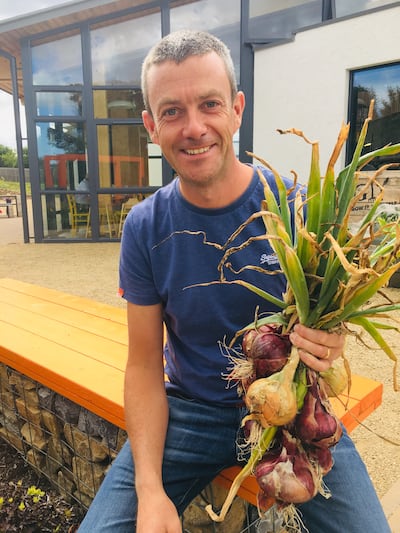
If a school can dedicate about 12 sq m to growing, they can potentially produce 50kg of vegetables in that space, which would save about 50kg of carbon, he says. A family doing the same can grow about a quarter of their vegetable needs for a year, about €500 worth of food.
Having raised €500,000 from philanthropic sources for this project in advance of the launch, GIY is hoping it can attract the rest of the funding from high-net-worth individuals, corporate sponsors and the Government. Minister of State for Mental Health Mary Butler last month launched the Grow at School development fund at GIY’s headquarters, which is in her Waterford constituency. The organisation has also been invited to address the Joint Oireachtas Committee on Education in the new Dáil term in the autumn.
GIY has been working with schools since its foundation in 2008 “and we have learned a lot about what works and what doesn’t”, says Kelly. “The expertise we have picked up over 10-12 years is all funnelled into this programme.” There are some very successful school gardens around the country, he acknowledges, but there are other schools who have them but aren’t really using them and some don’t have a garden at all.
“What we have done is effectively construct a school garden in a box. With the resources that we provide, it is almost ensuring it is a successful school garden and any teacher can use it, whether they have experience or not.” With a replica of the garden in Grow HQ in Waterford, “we literally hold the teachers’ hands during the academic year — this week is what we’re doing and here is a video of us doing it. It just takes all the guess work out of it.”

The top findings in an independent evaluation of the piloting of this programme in 32 primary schools highlight the immediate benefits to the pupils and the wider school community. The garden is used as both a formal and informal teaching tool, proving relevant to most subjects in the curriculum, particularly science, maths, language, geography, history and sustainability. But teachers also report its use in developing the “soft skills” of patience, resilience and co-operation. They note behavioural changes in pupils such as trying new foods, planting at home, calmed behaviour and a more positive outlook on coming to school.
However, the report also flags “time-management was a challenge for some”. That’s a problem for everyone when it comes to food-growing, Kelly says, “so it is critically important that we make it as easy as possible for teachers because they have so many demands on their time and projects they have to take on”.
Better choices
Siobhan Hyland, a special needs teacher in a small Co Galway school, has found Grow in School “hugely beneficial”, after signing up for its pilot phase almost by accident. So many schemes are offered to schools, “you almost get a flag for sneezing nowadays”, she jokes, but she noted this seemed to be a realistic, hands-on project, for which, crucially, GIY provided everything.
She has no doubt that connecting the pupils at Kingstown National School in Clifden to their food and where it’s come from will help them make better choices as they grow up. Learning the basics of what grows above and below the ground is enlightening for them. She remembers some children being “baffled” by the fact that Brussels sprouts grow on a stalk and that peas were growing in pods in front of them.
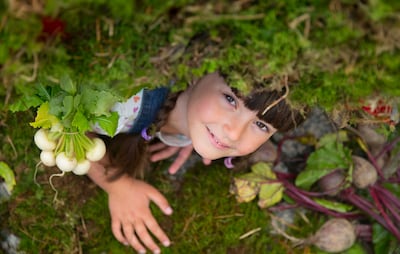
Everybody, from the five-year-old to the 12-year-old, can do something in the garden. It’s a “really good leveller” as all children are equal outdoors tending a garden. What’s more, “the kids that don’t talk, the quiet ones, they will chat away in the garden one to one because you’re not looking at them”.
Hyland says she had to drop expectations of herself as the teacher who is supposed to have all the answers. It was really nice for the children, she suggests, when their teacher could say, “I’ve never done this before. It’s a big mad experiment; we’re going to try it out and see what happens.”
Even the simple act of weeding is such a valuable educational thing to do because of the level of focus required, says Hyland. “You can’t be distracted while you’re weeding because you’re going to pull out a carrot and the teacher is going to eat you,” she laughs. Getting hands dirty in the soil is good for children too.
You might think pupils living in Connemara would need no encouragement to enjoy the outdoors. “Just because they are country kids, they’ll still be stuck on their iPads five hours a day if they can,” says Hyland. “It is the same disease that is affecting the whole generation.” She believes their experience of the school garden has made them notice more in their outdoor surroundings.
With just 22 pupils on the roll last year, seven Ukrainian children are due to join the school in September and she expects the garden to be very beneficial in working with them. We’re supposed to be all about wellbeing since Covid, she adds, and having a vegetable-growing garden “is the most concrete wellbeing move you can make for a school, I think”. “We are hard wired to be in nature,” says Dr Mark Rowe, a family doctor and author. “When we see green we feel safer.” According to the theory of biophilia, humans have an innate tendency to seek connections with nature imprinted in our DNA.
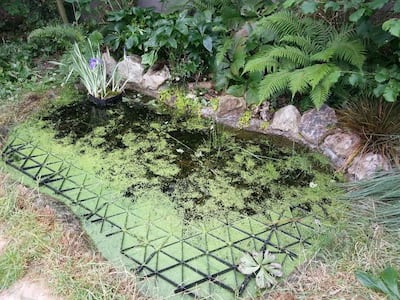
An advocate of lifestyle medicine, he describes GIY’s Grow at School as “a brilliant idea”, and one for which the time has very much come. “There is nothing like learning by doing. And there is nothing like starting with the next generation, with the kids, if you want to create long-term sustainable change in society. It’s about making better choices — we can make so many positive choices that have a massive effect on our long-term health and wellbeing.”
We all, to a large extent, become products of our environment and those environments can be health enhancing or health depleting, points out Rowe, founder of Waterford Health Park. Lifestyle research shows that 70 per cent or more of how our genes express themselves is determined by environment. If you can expose children to health-enhancing environments and health-enhancing activities, you can optimise the possibility for long-term, positive change.
“The bottom line is that lifestyle habits have a really big impact on cellular ageing, long-term health and, more importantly, how you feel on a day-to-day basis.” Although, he stresses, that’s not to say there isn’t bad luck in all these things too.
“So many children nowadays — and adults — are suffering from what I call nature deficit disorder because they are indoors most of the time.” Getting out in nature is a scientifically-proven great way to boost your mood. “Exercise is the greatest pill of all,” he says, and doing it outside compounds the benefits.
“There are happiness-boosting bugs in the soil called Mycobacterium vaccae and inhaling those bugs boosts serotonin and makes you feel more confident, more positive and more creative. And it has been shown that spending more time in nature makes you resilient.”
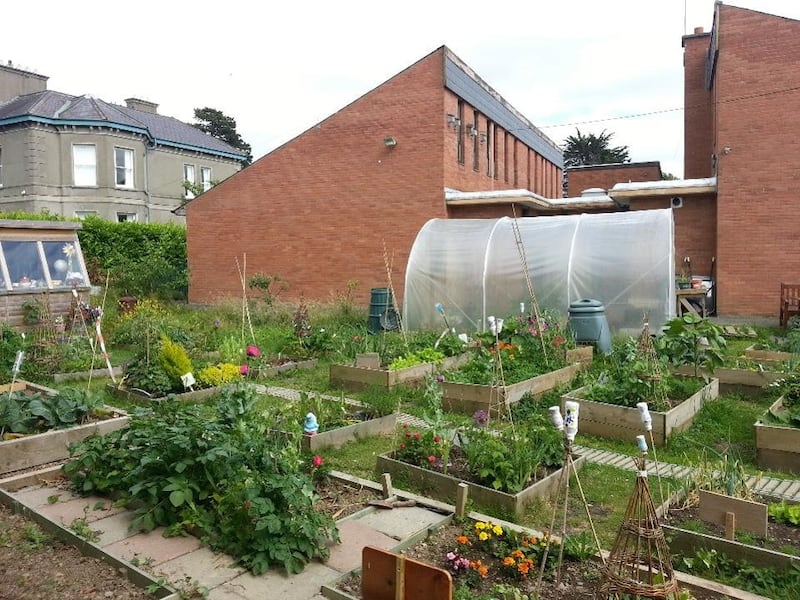
While any time is better than none, research at the University of Exeter found that significant wellbeing benefits start to accrue once you have spent 120 minutes in nature accumulatively over the week, Rowe adds. If every child could get that at school, they would reap the benefits, regardless of what’s possible in their home life.
Gaelscoil an Bhradain Feasa in Drogheda, Co Meath, has had some sort of garden ever since it opened in prefabs on GAA grounds in 2007, with 70 pupils. But when it got its new school building in 2017, says class teacher Colm O Domhnaill, funding for a garden was included, so the chance to participate in GIY’s pilot programme came at a good time.
It has had a “huge impact” on the children, he reports. “A lot of them have transferred what they have learned and started their own patches at home.” Children in the autism unit at the now 470-pupil school have probably got the most benefit out of it, he says. It has been “very therapeutic” for them to go out and work the soil and see the plants growing.
The garden now has 10 raised beds and they use recycled containers for growing, such as car tyres and old gutters, using the latter for lettuce and herbs. The school even kept about 40 hens at one time, with some of the crops fed to them. Produce has been sold to parents through a shop at the school and the proceeds ploughed back into the garden.
The school was included in the piloting of the Government’s school food programme, providing hot meals to every child. While it was a “brilliant” scheme, the pupils, he says, were very conscious of the amount of food that was wasted and the carbon footprint, compared with growing something in your own garden.
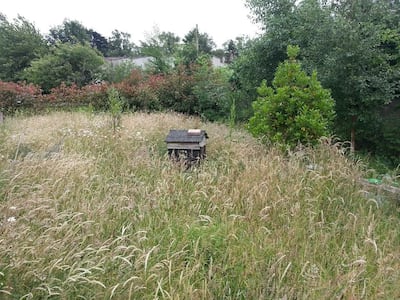
“We were surprised how aware the children were about the waste and a lot of it was down to the garden and growing your own food.” They had already learned to pick only as many potatoes or lettuce that they could sell at one time, he adds. “One year we picked it all at once and a lot of it went to waste.”
In the face of the overwhelming challenge of climate change, a project such as GIY’s Grow at School might seem to be a mere drop in the (rising) ocean. And it’s not as if other organisations, such as Engage with Nature, long-time advocate Paddy Madden and the professionals’ collective School Earth Education, haven’t been supporting school gardens over many years. What does Kelly say to the sceptics?
“To me the urgency of climate change trumps any cynicism that might be out there,” he says. “There is always the risk that we fall flat on our face here — we don’t achieve this goal, we don’t raise the money. We’re putting ourselves out there for sure but I just look around me at the moment and I am also oppressed by the news, all the wildfires and the stuff that is going on around the world. It is horrendous; it can be completely demoralising, disempowering and demobilising but to me all you can ever do is take action.
“To me this is an opportunity to bring about real systemic change at a national level,” he says, “and that’s really exciting. We just have to crack on and do it.”
***
Nature Hero Award
Fostering biodiversity is the focus of a new Nature Hero Award that will be rolled out in primary schools in the 2022/23 academic year.
Described as the first stand-alone award for outdoor learning, it will be a mark of excellence for schools who create an educational space that nurtures a love of nature, develops a knowledge of our biodiversity and encourages action to help it locally.

The awards campaign is being run by the education organisation Biodiversity in Schools, with the financial support of Glenveagh. The idea is that in recognising great work being done by some schools, says Mark Nolan, director of Biodiversity in Schools, this will inspire others to follow suit.
Schools that register for the awards will receive a checklist of tasks to be completed to become a Nature Hero. Projects vary, from hanging bird nest boxes to ensuring outdoor teaching time every week. They don’t have to have a garden but can start from scratch with any sort of outdoor space.
“The more ambitious schools are starting to rewild areas, natural meadows, putting in wildlife ponds and really embracing outdoor classrooms, getting the kids out day to day, week to week.”
Although the awards have a competitive edge, it is a participation achievement, he says. “It is as much about what goes on in the classroom as well — about what they have been taught and how it fits in with sustainability.”
The work of the organisation in individual schools has been boosted by growing awareness of the biodiversity crisis and post-Covid enhanced appreciation of the outdoors and nature, says Nolan, who hopes these awards will now help to get all schools involved. Even urban schools, he adds, have great scope for vertical growing and using old stone walls and heritage trees for nature initiatives.




